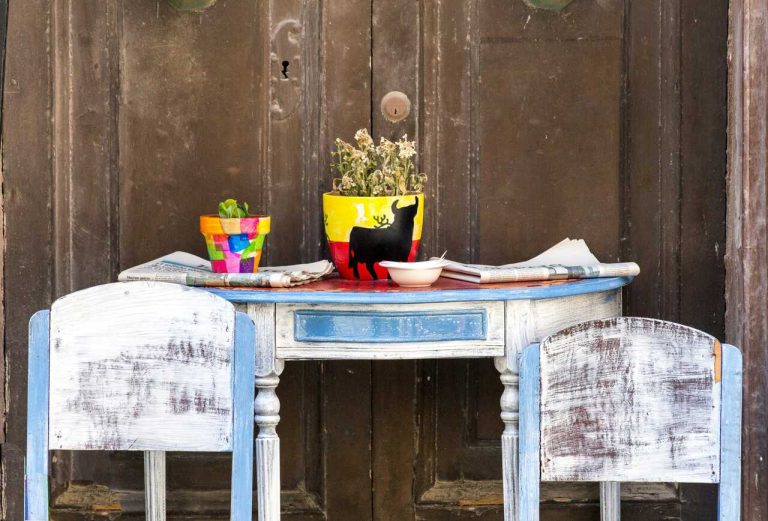
Every Way to Ask “How Was Your Day?” In Spanish
DATE:
Greeting is essential when learning a new language. However, a greeting is not only saying “hello” or “hey”, but almost always asking “How are you?”, “What are you doing?” “Where are you?”, etc. It all depends on the context and whether the communication is done face to face, in a call, or through a text chat.
Likewise, when it is night, the phrase “How was your day?” It is one of the most used when greeting and starting a conversation with someone anywhere in the world and in all languages.
Although in Spanish there is an exact phrase to ask someone how their day was, there are many phrases that you can use, they mean the same thing and derive from the main phrase, but they surely exist thanks to the ways of speaking, jargon and unique words of all Spanish-speaking countries.
If this is interesting to you, we invite you to know each of the ways to ask someone “How was your day” in this language.
Several ways to say “How Was Your Day”
This phrase is a constant in the speech of hundreds of millions of people daily, so the possibility that there are different ways of saying it is big. However, here are the main ways to say it if you’re chatting with a Spanish speaker who you want to ask this question:
- ¿Cómo estuvo tu día? (How was your day?) – This is the exact translation of the phrase in English.
- ¿Cómo estuvo su día? (How was your day?) – It is the same sentence, but “tu” (your) is changed to “su“, which means the same thing, but “tu” is an informal word, and “su” is more formal.
- ¿Qué tal estuvo tu día? (How was your day?) – The words “Que tal” have the same meaning as “Como”.
- ¿Cómo estuvo su día? (How was your day?) – The same as the previous sentence but “tu” is replaced by “su” to make it more formal.
- ¿Cómo estuviste hoy? (How were you today?) – “Estuviste” means “were you” when used in a question. In an affirmation, it means “you were”.
- ¿Cómo estuvo hoy? (How were you today?) – “Estuviste” and “estuvo” mean the same thing (you were/were you), but the first word is used with someone you generally trust more, and the second word is more formal. This does not apply in all countries, in many Spanish-speaking regions people can say the informal phrase to anyone.
- ¿Cómo estuvo usted hoy? (How were you today?) – “Usted” means “you”, so “estuvo usted” means “were you” when used in a question. In an affirmation, it changes to “Usted estuvo” so it means “you were”.
- ¿Qué tal estuviste hoy? (How were you today?)
- ¿Qué tal estuvo hoy? (How were you today?) – Same as the last sentence but written formally.
- ¿Qué tal estuvo usted hoy? – Same as the last sentence but with “estuvo” added (not necessary but grammatically correct).
- ¿Qué tal tu día? (What about your day?) – The words “Qué tal” can also mean “What about”. In Spanish and English, you can say “qué tal tu día”, but when you use it in English it is generally because the other person already asked you first.
- ¿Qué tal su día? (What about your day?) – Same as “qué tal tu día” but with “su” instead “tu”.
More ways to ask this question in Spanish
- ¿Cómo la pasaste hoy?
How did you spend it today?) – Although “pasaste” (passed) comes from “pasar” (to pass), in English, there is no phrase like “How did you pass it today”, instead it is usually said “How did you spend it today” to indicate how was a person in the day that passed or ended. - ¿Cómo la pasó hoy? (How did you spend it today?) – The same as the previous sentence, but using “pasó” instead of “pasaste” which means the same thing, the only difference is that this one is more formal.
- ¿Cómo pasaste tu día? (How did you spend your day?)
- ¿Qué tal pasaste tu día? (How did you spend your day?) – Same as the last sentence but using “Qué tal” instead of “Cómo”, which means the same in this explicit context.
- ¿Que tal pasaste el día? (How did you spend the day?)
- ¿Cómo te fue hoy? (How did you do today?) – Another way of saying “How was your day?” which if translated literally would be something like “How did you go today”.
- ¿Cómo le fue hoy? (How did you do today?) – Same as the last sentence but with “le” instead of “te”, to mark a respectful way of addressing another person, being a formal word.
- ¿Cómo le fue este día? (How did you do this day?) – Another translation could be “How did it go today (this day)”.
- ¿Cómo le fue en este día? (How did you do this day) – Same as the previous sentence but with “en” (in), being a preposition not necessary but grammatically correct.
- ¿Cómo anduvo tu día? (How did your day go?) – “Anduvo” comes from “andar“, a synonym for “ir” (go) which means moving from one place to another.
- ¿Cómo han estado hoy? (How have you been today?) – “Han” is the plural of “you”, this phrase is used to ask both or more people.
How do Spaniards say “How Was Your Day”?
Now, the 22 ways mentioned earlier of saying “How was your day” are not the only ones, because in Latin America, and especially in Spain, there are even more phrases to relate to this question. Most of the sentences are practically the same as you saw before but with some obvious changes.
The compound present perfect is used permanently, a virtual tense that is applied in Spanish much more than it is usually used by people from Latin America or other regions of the world who speak Spanish. Some of the phrases are:
- ¿Cómo ha estado tu día? (How has your day been?)
- ¿Cómo ha estado su día? (How has your day been?) – Same as previous sentences but using “su” instead of “tu”, which means the same but is the first one more formal.
- ¿Cómo has estado hoy? (How have you been today?) – “Has estado” means “Have you been” or “You have been”, That depends if it’s a statement or a question.
- ¿Cómo ha estado hoy? (How have you been today?) – Same as the previous sentence but using “ha” instead of “have”, which means the same, but the first word is more formal.
- ¿Cómo has pasado tu día? (How have you spent your day?)
- ¿Cómo ha pasado su día? (How have you spent your day?) – Same as the previous sentence but using “ha” instead of “has”.
- ¿Cómo ha pasado el día? (How have you spent the day?)
- ¿Cómo le ha ido en el día? (How have you done it in the day?) – Another way of saying “How has your day been?” which if translated literally would be something like “How did you go today”.

- ¿Cómo te ha ido en el día? (How have you done it in the day?) – Same as the previous sentence but using “le” instead of “te”.
- ¿Cómo te ha ido hoy? (How have you done it today?)
- ¿Cómo te ha ido este día? (How have you done it this day?)
- ¿Cómo le ha ido este día? (How have you done it this day?) – Same as previous sentences but using “le” instead of “te”.
- ¿Cómo ha sido tu día? (How has your day been?) –
- ¿Cómo ha sido su día? (How has your day been?) – Same as previous sentences but using “su” instead of “tu”.
- ¿Qué tal el día? (How is your day going on?)
- ¿Que tal ha sido tu día? (How has your day been?)
- ¡Qué tal ha sido su día? (How has your day been?) – Same as previous sentences but using “su” instead of “tu”.
- ¿Qué tal ha estado tu día? (How has your day been?) – Seemed as “Qué tal tu día”. “Estado” and “sido” come from “estar” and “ser”, and both mean the same (at least in this current phrase): “been”, but “ser” is used to discuss permanent states while “estar” is used to discuss transient circumstances. Both would be expressed with the verb “to be” in English, although they have slightly different connotations in Spanish.

- ¿Qué tal ha estado su día? (How has your day been?) – Same as the previous sentence but using “su” instead of “tu”.
- ¿Qué tal te ha ido en este día? (How have you been doing today?)
- ¿Qué tal te ha ido este día? (How have you been doing today?)
- ¿Cómo habéis pasado este día? (How have you spent your day?) – “Habéis” mean plural “you”
- ¿Cómo lo habéis pasado hoy? (How have you spent it today?)
- ¿Cómo habéis estado hoy? (How have you been today?) – Plural
- ¿Qué tal lo habéis pasado? (How have you spent it?) – Plural
- ¿Cómo te encuentras hoy? (How are you today?)
- ¿Cómo estás hoy? (How are you today?)
- ¿Comó fue su día? (How are you today?)
- ¿Cómo estuviste la ultima semana? (How were you last week?)
This vocabulary can help you to know the answers that are given in Spanish to this question:
|
Spanish |
English |
|---|---|
|
Estuvo bien |
It was okay |
|
Bien |
Good |
|
No estuvo mal |
It was not bad |
|
Genial |
Great |
|
La pasé bien |
I had good time |
|
Me cansé demasiado |
I was too tired |
|
Más o menos |
Kind of |
|
Regular |
So so |
|
Mal |
Bad |
|
Muy mal |
Very bad |
** Words that take on another meaning depending on the context in which they are spoken.
Colloquial ways of asking “How was your day?” in Spanish
As you well know, in Spain or each Latin American country there are different ways of speaking, and you can use many words from each region that you may not know.
QUICK NOTE…
Being “How was your day?” a question, don’t forget that in Spanish there is a question mark at the end of the sentence, but also at the beginning (¿), so if you are going to write this sentence to someone in Spanish, it should be as we say in the following example: “¿Cómo estuvo tu día?”
See what are the colloquial ways of asking “How was your day” in different Hispanic countries:
- Mexico: ¿Qué tal la chamba? – How was your job? – “Chamba” is a word used in Mexico to refer to “Trabajo”
- Colombia: ¿Quihubo todo? – How was everything? – “Quihubo” is a short way to say “Qué hubo”, which means “What’s up”
- Argentina: ¿Todo bien hoy? – Was everything okay today?
“How was your day” in each personal pronoun
As you well know, this question is asked in the second person (you), but it can be conjugated to ask it in all personal pronouns.

Surely you also want to know how to say “How was your day” in all the personal pronouns in Spanish and be able to be more prepared to establish a group conversation or a talking that requires using these conjugations. Here is a table that allows us to represent it:
Conjugations in each personal pronoun:
|
Pronoun |
English |
Spanish |
|---|---|---|
|
Yo |
How was my day? |
¿Cómo estuvo mi día? |
|
Tú |
How was your day? |
¿Cómo estuvo tu día? |
|
Él |
How was his day? |
¿Cómo estuvo su día? / ¿Cómo estuvo el día de él? |
|
Ella |
How was her day? |
¿Cómo estuvo su día? / ¿Cómo estuvo el día de ella? |
|
Ellos |
How was their day? |
¿Cómo estuvo su día? / ¿Cómo estuvo el día de ellos? |
|
Ustedes |
How was your day? |
¿Cómo estuvo su día? / ¿Cómo estuvo el día de ustedes? |
|
Nosotros |
How was our day? |
¿Cómo estuvo nuestro día? |
DID YOU KNOW…?
In Spanish, most of the conjugations in the pronouns “Él” or “Ella” do not have any change between them
Example of a conversation in Spanish
Here’s an example of a natural conversation between two friends asking each other how their day was:
– Hola Betty – Hello Betty
– Hola doctor Armando! – Hello doctor Armando!
– ¿Cómo estuvo tu día? – How was your day?
– Muy cansado, pero estuvo bien, ¿Cómo va todo hoy para ti? – Very tired, but it was good, and how is your day today?
– Estuvo fantástico, gracias por preguntar – It was fantastic, thanks for asking.
– De nada, y, ¿qué tal el día de tu familia? – You’re welcome, and how about your family’s day?
– Estuvieron muy contentos, pero ahora descansan – They were very happy, but now they rest
– Y ¿Cómo la pasaron? – And how did they spend it?
– Muy bien, estuvieron en la nieve todo el día – Very good, they were in the snow all day
– Genial, envíales un saludo – Great, send my greetings
– ¡Igualmente, un saludo para tu familia! – Same, greetings to your family!
– Gracias, hasta mañana – Thanks, see you tomorrow
– Hasta mañana – See you tomorrow

Signing Off in Style
As you can see, the rich Spanish vocabulary offers numerous ways to ask ‘How was your day’, while there are 4 to 8 common English translations (like ‘How did you spend your day’ and ‘How were you today’), the diverse vocabulary provides more than 50 unique ways to pose this question directly to someone.
On the other hand, you were also able to know the conjugations of this phrase in each personal pronoun, and you have also learned that the Spanish may have their way of asking this question thanks to the fact that they permanently use the past perfect tense.
We hope that you have liked this information and that you have been able to learn dozens of ways to say “How was your day” and thus put it into practice when conversing with other people.
Ready to amp up your Spanish game? Put your new “How Was Your Day In Spanish” skills to the test! Join our 1-on-1 FREE Spanish lesson or enjoy a 7-day trial in our lively group classes. Don’t miss out, start speaking like a local today!








